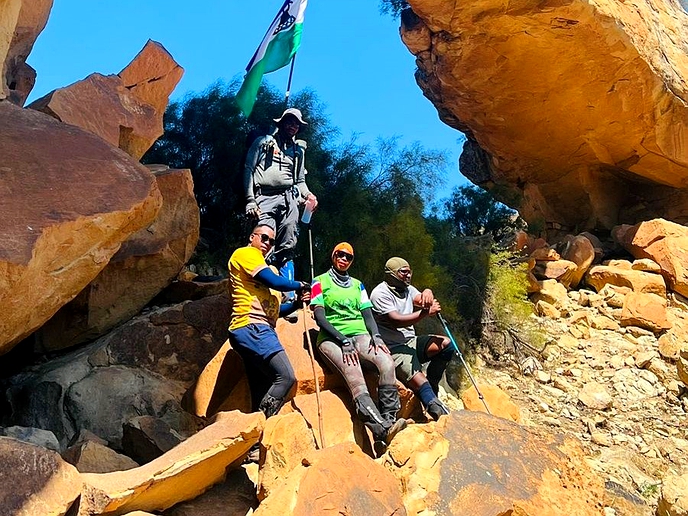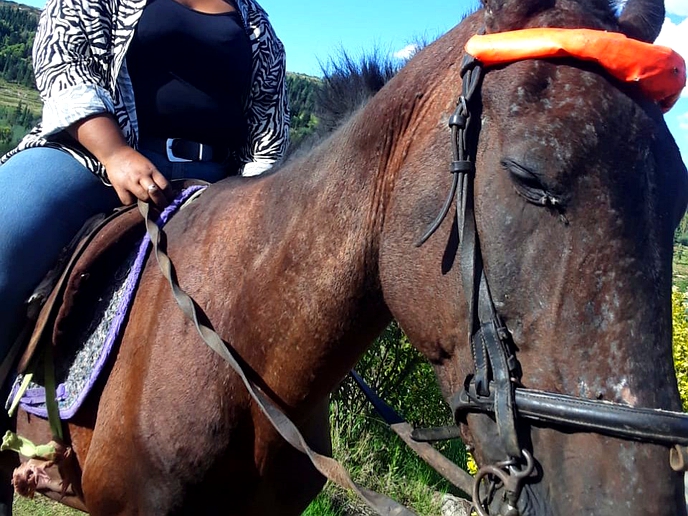LERIBE - SEPTEMBER is known as a tourism month worldwide, and I therefore used it as a platform to learn. My classroom was rather different, a day visit to a Kolonyama Gates Arts and Cultural Centre.
travel
Oct. 29, 2023
BY MAPAMELA KHANYELA
4 min read
Kolonyama Art Cultural Centre, a diverse heritage place
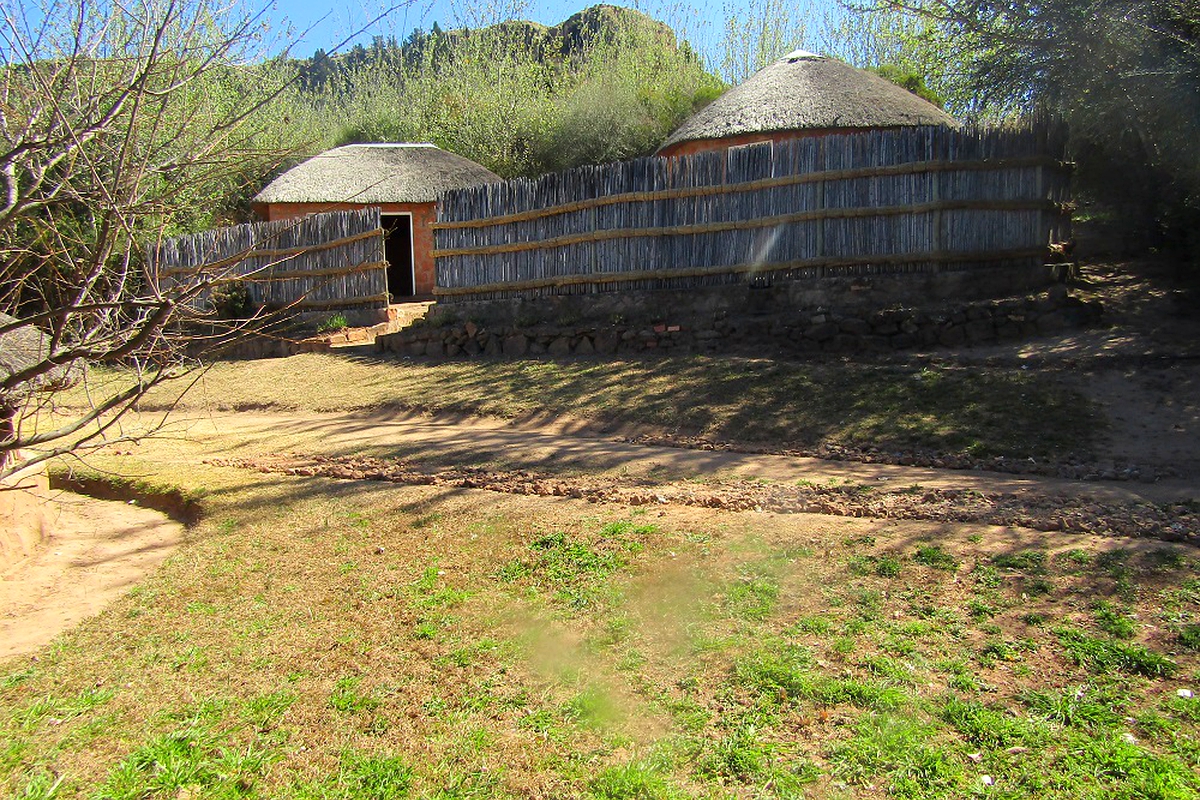
The Kolonyama Art and Cutlural Centre
Story highlights
The centre is located in Leribe, about 52km from the capital, Maseru. I travelled to the facility on September 23, from Maseru for a new lesson.
The centre is about 2km away from the main North 1 road, located below a towering plateau of Koloymana. I walked through a community of modern and old houses to my destination that morning, following a marked trail.
I was welcomed by Mr. Samara Ntoi and Mrs. ’Matšepo Koloko on my arrival at the centre. The duo works as a manager and a tour guide, respectively. The main entrance of the centre is a beautiful gate with an array of tall palm and olive trees and bitter and spiral aloes decorating the main entrance.
Mr. Ntoi narrated the fascinating history of the place before we began our tour.
“Kolonyama Gates, Arts and Cultural Centre was built in 2016 with the aim of showcasing different cultures found in Lesotho through exhibiting the art work and traditional performances. The name Kolonyama means abundance of meat; it was named by the Ndebele people who lived here many years ago, and animals such as porcupines and rabbits were many; even today, we still have them in our midst,” he said.
I noticed that the centre has unique traditional architecture thatched with tambookie grass.
The entrances to the traditional houses we were about to tour are fenced with reed screens. The starting point of our tour was a circular house exhibiting the lifestyle of ancient Basotho. The house has a kitchen shelve (moholoana). There are beautiful Basotho hats, spears, shields, a fire place with a mantelpiece above it, double-headed drums, and a blanket with art portraying Moshoeshoe I hanging on a wall. There is also a place used to store smoking pipes for the man of the house and storage for porcupine feathers. The house also has a grinding stone and some maize in a grass basket. We left that house and passed a grass container next to the reed screen, which Mr. Ntoi explained as sesiu, a storage of grains Basotho use after a good harvest.
What also caught my eye was a morabaraba board, a traditional mind and board game played by Basotho men. “This game is a reminder of how Basotho men would to spend time and exercise their minds; we therefore allow our visitors to have a feel for our traditional games,” said Mr. Ntoi.
As I enjoyed the lessons offered by Mr. Ntoi and a few minutes later, Ms. Koloko came out of a house wearing Basotho women’s outfit made of animal skin to show how Basotho women used to dress, and as if that was not enough, she sequentially showed the Zulu and Xhosa women’s traditional dresses as we toured the center.
“We allow our visitors to have a feel of Basotho's, Zulu's, and Xhosa's attire because the three cultures are intertwined,” she said.
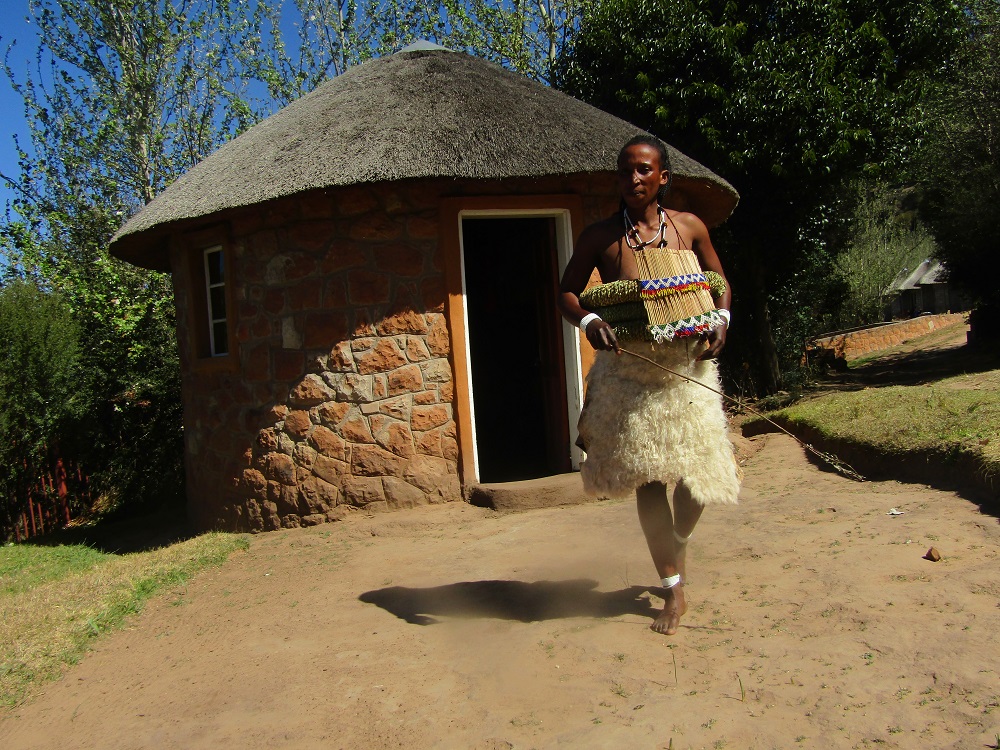
The tour guide at the centre, Mrs. ’Matšepo Koloko
Enjoy our daily newsletter from today
Access exclusive newsletters, along with previews of new media releases.
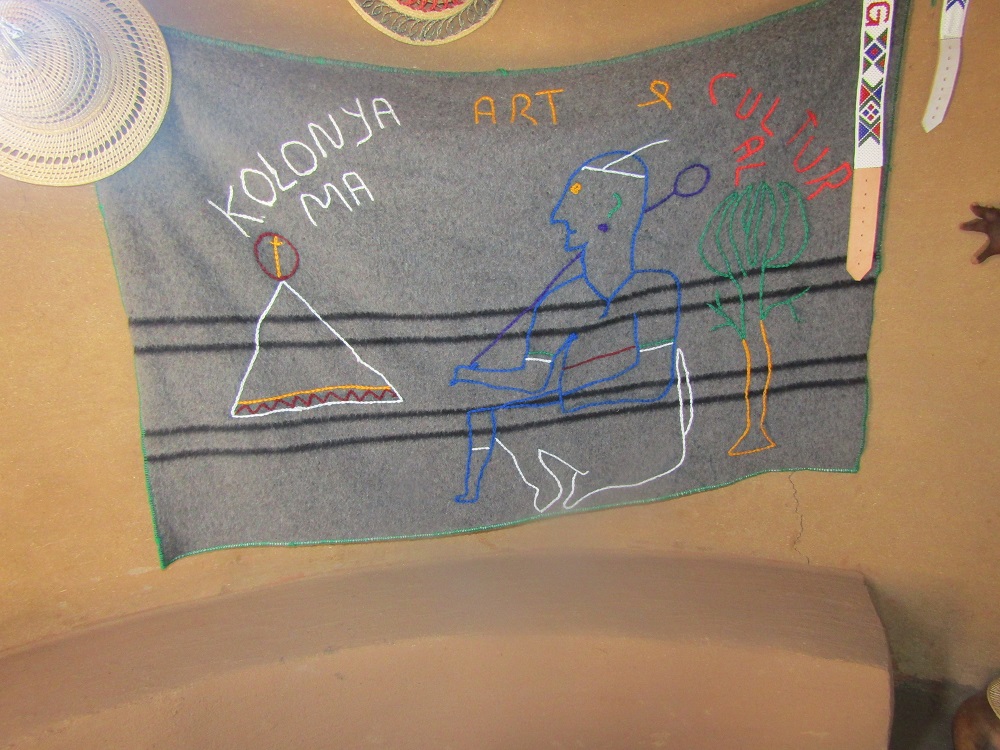
Blanket with art decorations
We could hear the melodies and soothing sounds of the birds as we walked in the yard of the center. The art centre is surrounded by a condensed forest. To the east of the centre, is the Phuthiatsana River, a boundary between Leribe and Berea districts.
Our next stop was a rondavel, and within it, there is a display of the Xhosa’s and Zulu's traditional attires. There were red dresses hanging on the wall, shields, decorated knobkieries, and Zulu men’s traditional attire.
Unlike the Basotho house, that household is divided into two sections, with a wall of about 1 metre high, hiding the pots and foods from visitors.
“We have bought some of this attire from the Zulus in South Africa because we wanted the authenticity of the things we wanted to exhibit,” explained Mr. Ntoi.
From that house, exhibiting a mixture of Zulu and Xhosa attire, we then walked to a house displaying changes as Basotho interacted with other cultures.
I was fascinated by the art of traditional Basotho-built racks made of soil displaying enamel plates, cups, and spoons.
As we made our way up our tour, we passed by an ash hip before entering a house described as a household that men used to store some seeds for the next ploughing season. We had to bend down to enter a small door of the house. There was maize hanging from the roof of the house, showing how men used to keep their seeds for the next ploughing season.
A day visit to Kolonyama Gates Arts and Cultural Centre has taught me the following: the centre is a learning hub for students and academics whose interests are in history, arts, and culture, and of course, a place where deep questions of culture are answered. Finally, to taste the traditional foods of Basotho, Zulu's, and Xhosa’s, one has to make prior arrangements with the management of the centre and be ready to pay M50.
Tailored for you



